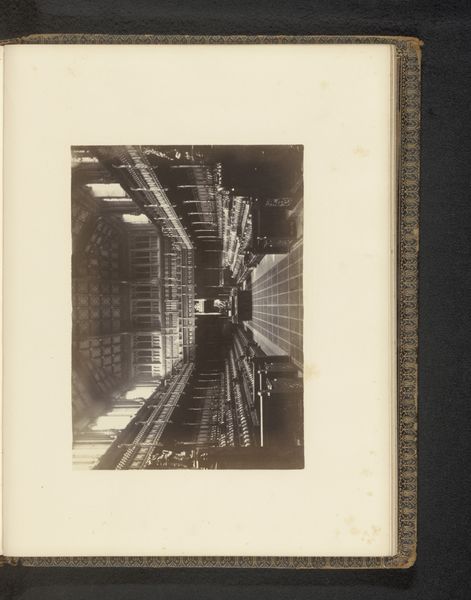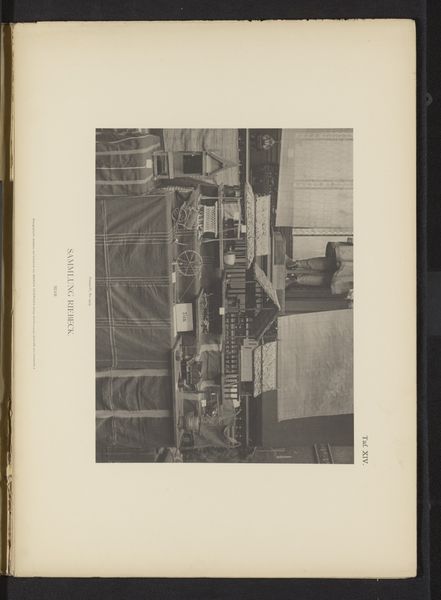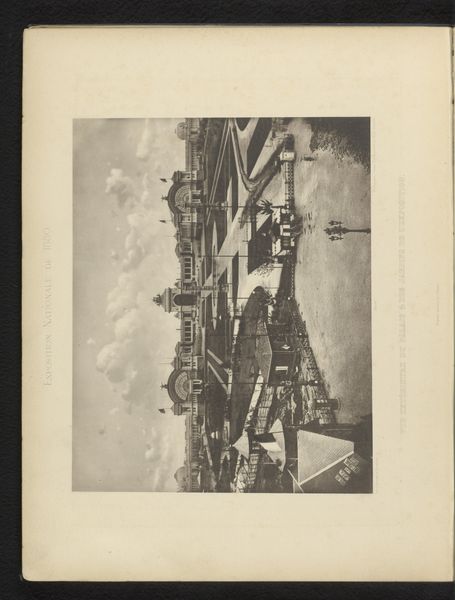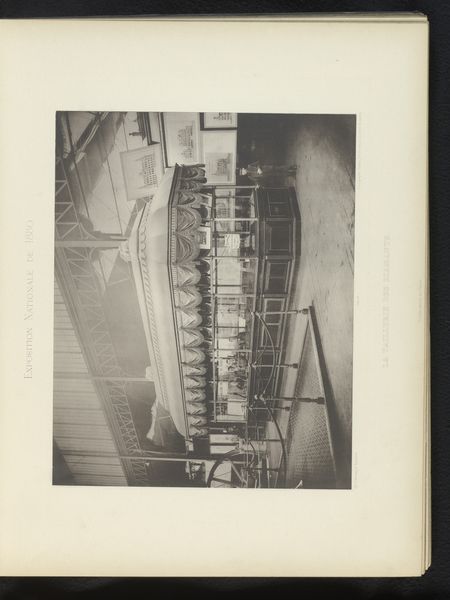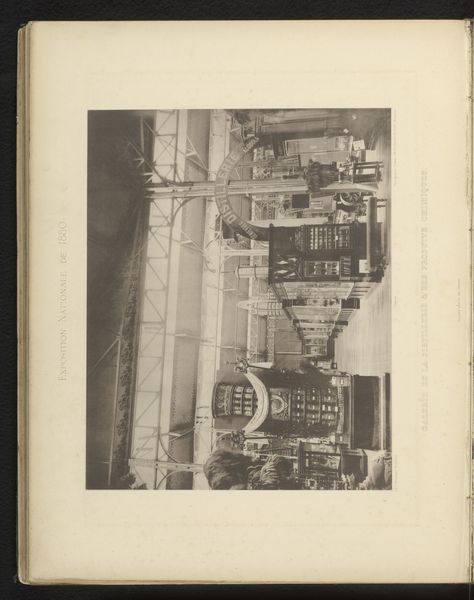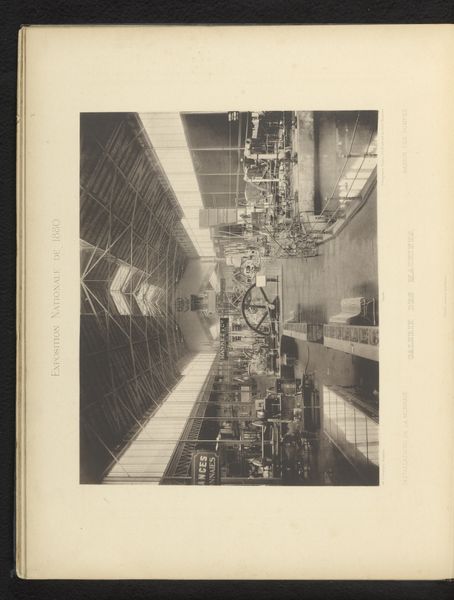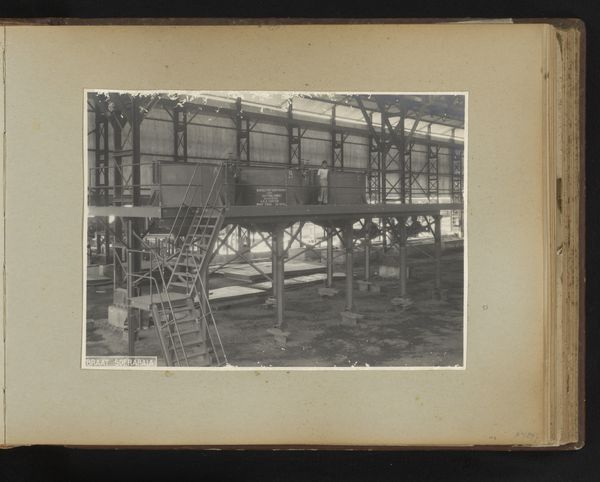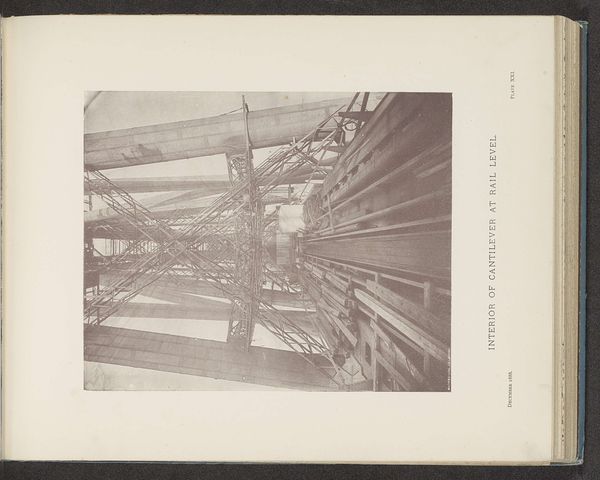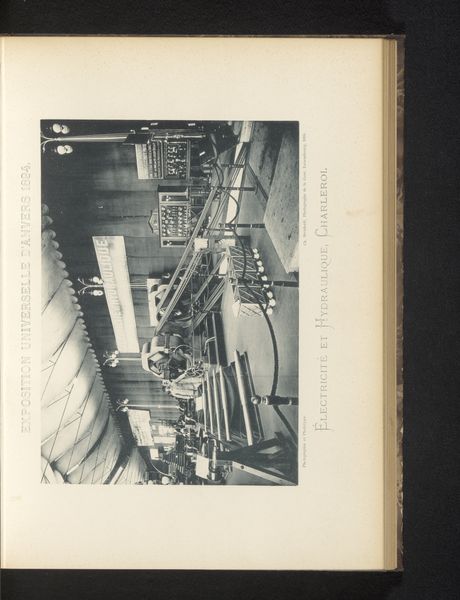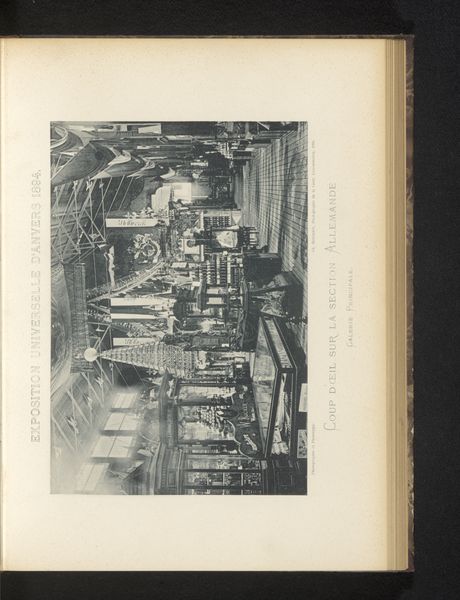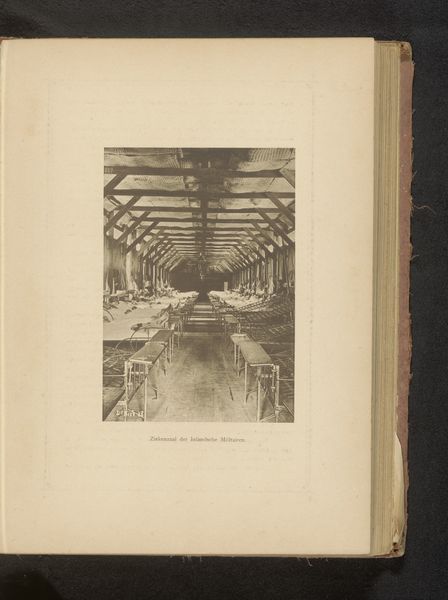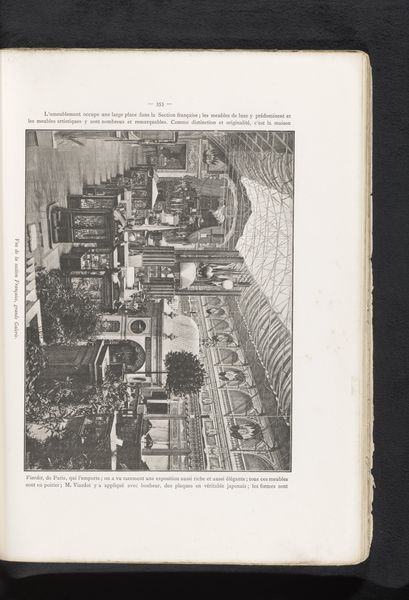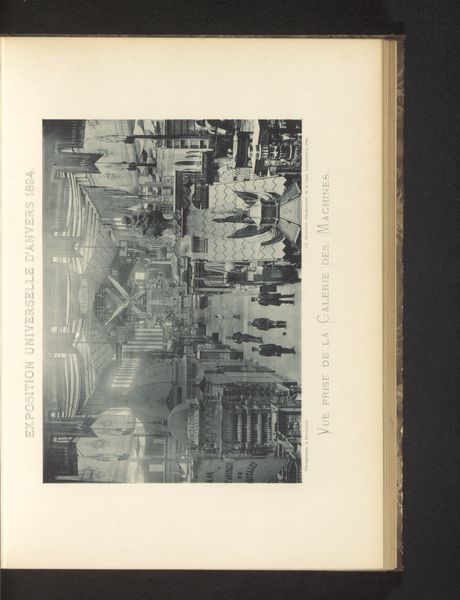
Galerij met ambachten op de Exposition Nationale van 1880 in Brussel, België 1880
0:00
0:00
print, photography, gelatin-silver-print
# print
#
photography
#
gelatin-silver-print
#
cityscape
#
realism
Dimensions: height 240 mm, width 300 mm
Copyright: Rijks Museum: Open Domain
Editor: Here we have Ferdinand Fussen's "Galerij met ambachten op de Exposition Nationale van 1880 in Brussel, België", a gelatin-silver print from 1880, depicting a gallery of trades at the National Exhibition in Brussels. The composition is really striking with its high ceiling and the organized chaos of the exhibition below. How do you interpret this work? Curator: It's fascinating, isn't it? Fussen's photograph captures the burgeoning Industrial Revolution on display. The photograph serves as a powerful document reflecting not just technological advancement but the social restructuring happening at the time. What do you notice about the perspective he uses? Editor: The high vantage point gives a sense of overview. The people appear as tiny figures amid all the machines and products. Curator: Exactly. It speaks to the changing scale of labor and the individual's place within the system. We need to consider how these "National Exhibitions" reinforced colonial power structures and justified exploitation through celebrating industrial 'progress.' What kind of progress do you think was being celebrated here? Editor: It looks like the progress of industry, but what cost was hidden behind this progress? I wonder who profited from this exhibition and whose labor fueled it? Curator: Precisely. Photography wasn’t neutral, then or now. Images like this participated in the construction of narratives, shaping public perception around industrial expansion and national identity. It highlights how progress isn't inherently good if it benefits some at the expense of others, even more so considering the rise of labor movements and socialist thought during this period. Editor: I'm now understanding the layered meanings embedded in what seems like a straightforward depiction of industry and commerce. There are implications regarding labor, class, and power. Curator: Absolutely. And questioning these implications is essential to engaging critically with visual culture from the past and the present. This image encapsulates a pivotal point in history.
Comments
No comments
Be the first to comment and join the conversation on the ultimate creative platform.
